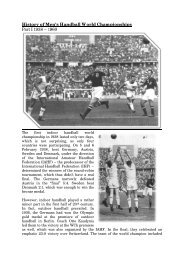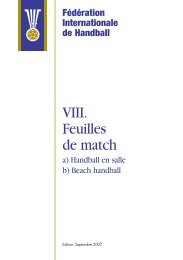Beach handball - IHF
Beach handball - IHF
Beach handball - IHF
Create successful ePaper yourself
Turn your PDF publications into a flip-book with our unique Google optimized e-Paper software.
Some typical situations where time-outs are not obligatory but nevertheless tend to<br />
be given in normal circumstances are:<br />
a. A player seems to be injured,<br />
b. A team is clearly wasting time, e.g. when the team is delaying the execution of a<br />
formal throw, when a player is throwing the ball away or not releasing it, or<br />
when a player leaves the court too slowly after a suspension.<br />
c. A faulty substitution or when an ‘additional’ player unintentionally enters the<br />
court (4:13-14).<br />
d. External influences e.g. the bands or ropes have to be reattached.<br />
2:15 Infraction during a time-out have the same consequences as infractions during the<br />
playing time (16:16, comment 1).<br />
2:16 The referees give the timekeeper a signal when the clock is to be stopped in<br />
connection with a time-out.<br />
The interruption of the playing time is to be indicated to the timekeeper through<br />
three short blasts on the whistle and hand signal 16.<br />
The whistle must always be blown to indicate the restart of the game after a timeout.<br />
(15:3b). With this whistle the timekeeper starts the clock.<br />
Team Time-out<br />
2:17 Each team has the right to receive a 1-minute team time-out in each half of the<br />
regular playing time<br />
A team official of the team that wishes to request a team time-out must do so by<br />
showing clearly a „Green card“. Therefore he goes to the middle of the side-line and<br />
holds up the „Green card“ in a clearly visible manner, so that it is immediately<br />
recognizable for the timekeeper.<br />
(The „Green card“ shall measure about 30x20 cm and must have a large „T“ on<br />
each side.)<br />
A team may request their team time-out only when it has possession of the ball<br />
(when the ball is in play or during an interruption). Provided that the team does not<br />
lose possession of the ball before the timekeeper has time to whistle (in which case<br />
the team time-out will not be allowed) the team will be granted the team time-out<br />
immediately.<br />
The timekeeper then interrupts the game by blowing the whistle, gives the hand<br />
signal for time-out ((Nr 16) and points with a stretched arm at the team that<br />
requested the team time-out. The „green card“ is placed in the sand in the middle of<br />
the sideline and about 1 meter outside it by the team official. It remains there during<br />
the rest of the playing time of the half concerned.<br />
The referees give a time-out and the timekeeper stops the clock. The referees<br />
acknowledge the team time-out and the timekeeper starts a separate clock<br />
controlling the duration of the team time-out. The scorekeeper enters the time of the<br />
team time-out, and the half, in the scoresheet for the team that requested it.<br />
8




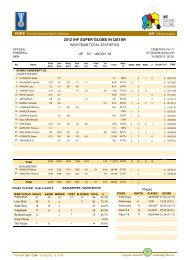

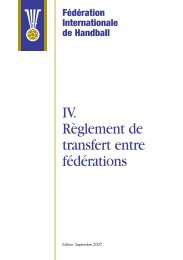
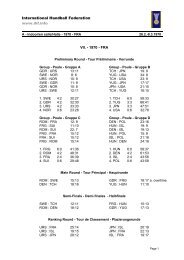

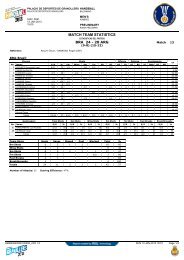


![[IHF- Referee list 2012/2013]](https://img.yumpu.com/18217761/1/184x260/ihf-referee-list-2012-2013.jpg?quality=85)
